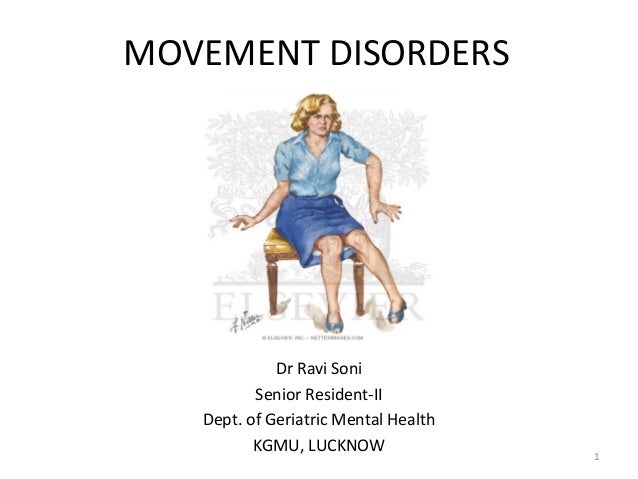Sporadic Movement Disorder
A frequently -misdiagnosed movement disorder Abhishek Anand K S Premsagar I C ABSTRACT Paroxysmal non-kinesigenic dyskinesia is a very rare movement disorder. 4 provides a guide to utilization of saccadic abnormalities in the evaluation of the movement disorders patient.

Pathophysiology Of Movement Disorder Emergencies Storms Download Scientific Diagram
The algorithm displayed in Fig.

Sporadic movement disorder. These movements can be anything from. It is a common movement disorder that most often affects the hands but can also occur in the arms head vocal cords torso and legs. Idiopathic dystonia may be sporadic or inherited as an autosomal dominant or recessive disorder.
Saccades can be used to pinpoint the diagnosis of many hypokinetic disorder or parkinsonian syndromes the most obvious of which in this category is. Anti-NMDA receptor antibody encephalitis NMDAE can also have a similar clinical course but presents with a distinct movement disorder. For the purpose of this review and to create a practical approach for ICU patients the term abnormal movements will refer to the variety of movements seen in the ICU accompanying different types of brain injuries including the motor findings of seizures and NCSE paroxysmal posturing movements accompanying cerebral herniation shivering clonus and the.
The expression of α-synuclein gene can be influenced by the genomic load andor epigenetic factors. We present a 40 -year -old man with non-kinesigenic paroxysmal dyskinesia. The discovery highlights.
Changes caused by. Sporadic paroxysmal non-kinesigenic dyskinesia. Endocrinologist says there is no link neurologist also says not connected.
Tremor - rest postural or intention. This MDS Interactive module provides learners with an overview of the pathogenesis of movement disorders. Sporadic Creutzfeldt-Jakob disease sCJD and anti-NMDA receptor antibody encephalitis NMDAE can both produce a rapidly progressive dementia with resulting state of catatonia or akinetic mutism.
Approximately 3 in every 10000 people about 90000 people in the United States are known to suffer from ST. Sporadic transient tic disorder. Both are associated with movement disorders.
Motor andor vocal tics. Parkinsons disease is by far the most common disorder of movement affecting 3 of individuals over the age of 65. Few cases have been reported in the literature so far.
Sporadic Creutzfeldt-Jakob disease sCJD is a prion disease presenting as rapidly progressive dementia that may lead to akinetic mutism 1 2. Movement disorder case Three points to stress in history. In published case series myoclonus appears to be the most.
Chorea - typified by Huntingtons. It can occur sporadically on its. The MDS Pathogenesis of Movement Disorders.
Diagnosed with Graves three years ago at exactly same time developed oral - facial dyskenasia which has progressed to sporadic movement disorder. It is also known as Cervical Dystonia and is referred to by many as torticollis. By using quantitative real-time polymerase chain reaction techniques we demonstrated that the α-synuclein gene mRNA expression in sporadic PD did not differ from healthy controls median range 0110 00120628 vs.
Other common movement disorders include. Birth history- anoxia peri-natal problems milestones delayed onset movement disorders Family history- positive negative and absent family history many movement disorders conditions are inherited Drug and toxin history. Paroxysmal kinesigenic dyskinesia PKD MIM 128200 is a rare paroxysmal movement disorder that occurs at an estimated prevalence of 1150000 individuals1 Onset is most commonly in childhood or adolescence with sporadic and familial cases being reported23 PKD is characterized by short and frequent episodes of dystonic or choreiform movements.
An involuntary movement occurs when you move your body in an uncontrollable and unintended way. Tauopathies course will provide a comprehensive overview of the differential diagnosis of sporadic versus genetic tauopathies and the distinct pathological hallmarks in tauopathies. Algorithmic approach to movement disorders by utilizing saccades.
Tremor may be intermittent occurring at separate times with breaks or constant. Paroxysmal dyskinesias PD are episodic movement disorders in which abnormal movements are present only during attacks. The most commonly already described MDs in multicentric trials were ataxia and tremor 10 However the first report was on MCL in a small study by Asconape et al.
Researchers have identified a mechanism that appears to underlie the common sporadic non-familial form of Parkinsons disease the progressive movement disorder. Movement Disorders Movement disorders are a group of conditions characterized by alteration in normal motility posture or tone alone or in combination. The term paroxysmal indicates that symptoms are noticeable only at certain times.
Spasmodic Torticollis ST is a painful and debilitating neurological movement disorder. This week T4 is 69 and TSH is 0002 spasms are back. In a new study researchers from the University of Copenhagen show that the most common form of the disease encompassing 90 to 95 percent of all Parkinsons Disease cases known as sporadic PD is.
This movement disorder is caused by a dysfunction of the brain. Acute or chronic dystonia may be. In this context movement disorders MDs associated with PGB were rarely reported.
Movement disorder including chorea may be present in sCJD. The term dyskinesia broadly refers to movements of the body that are involuntary. A subtype of tic disorder particularly common in children which manifests with motor or vocal tics that occur over a period of less than one year before resolving.
That drew attention to the safety of PGB in which two individuals out of six using PGB.

Representative Treatment Options For Post Stroke Movement Disorders Download Table

Etiology Of Pd Sporadic Pd Is A Complex Multifactorial Disorder With Download Scientific Diagram
